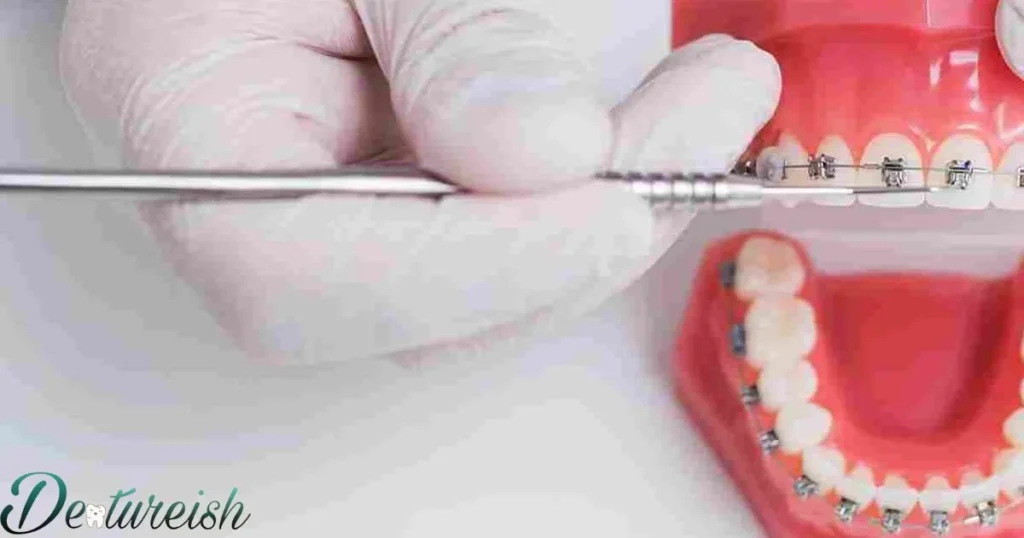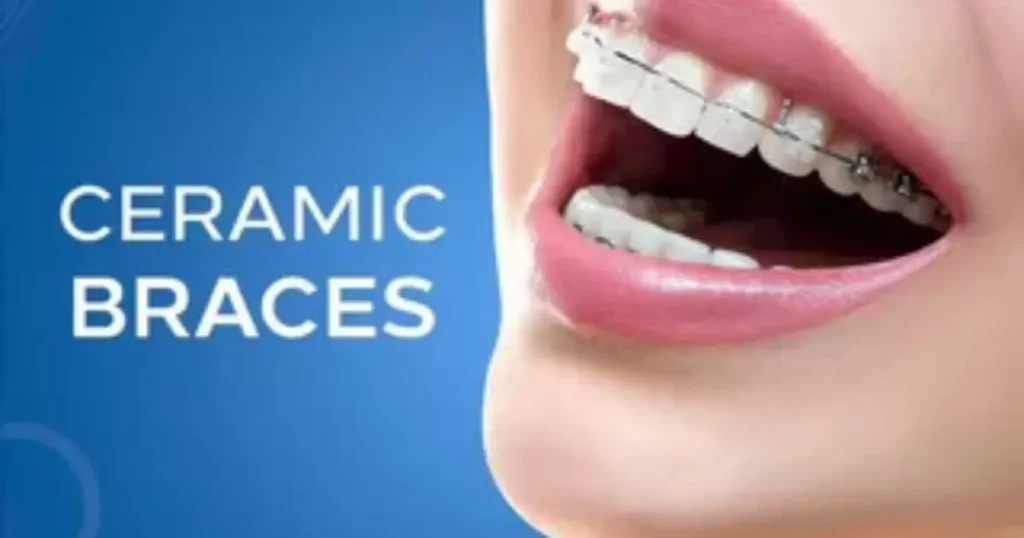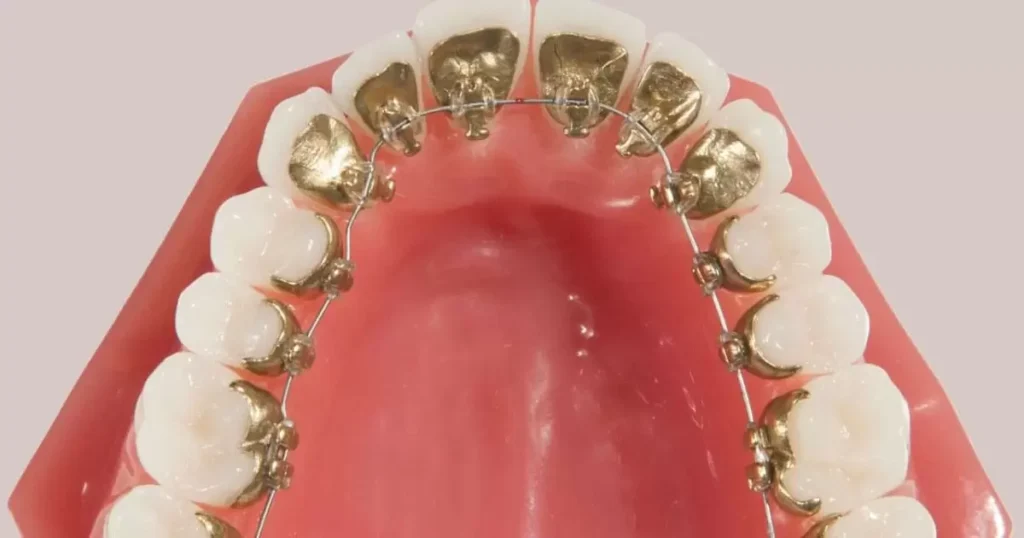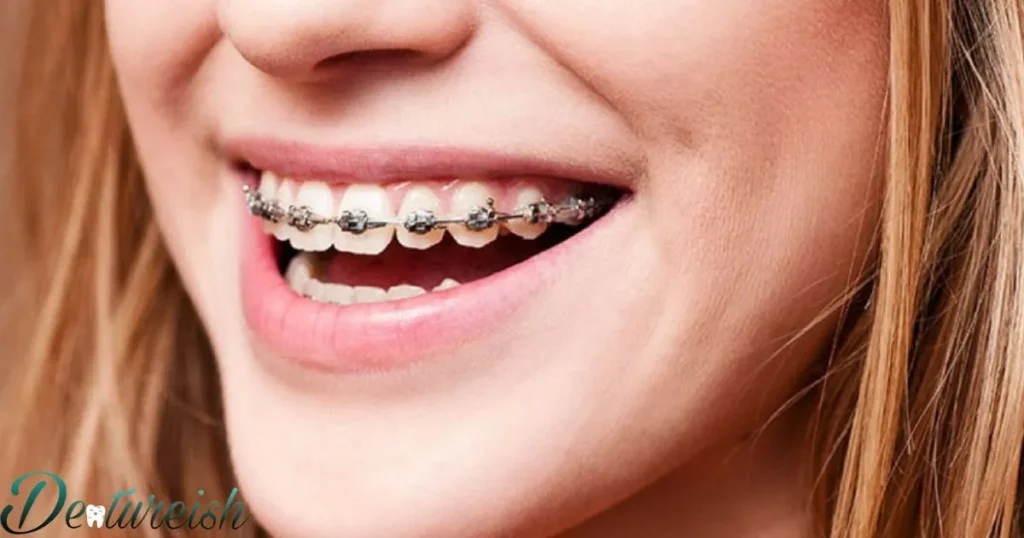Braces are orthodontic devices used to align teeth and help bite issues. Braces come in different types to treat various dental misalignments.
What Kinds Of Braces Are There? is an important question for those considering orthodontic treatment. Having an understanding of the brace options available allows a person to choose the type best suited to their own dental needs.
The most common types of braces are metal braces, ceramic braces, and invisible braces. Metal braces use traditional orthodontic brackets and wires to gradually shift teeth into proper position. Ceramic braces are more aesthetically pleasing but work the same way as metal. Invisible braces are nearly transparent and removable, allowing teeth to be aligned without the obvious appearance of braces.
What Are The Common Braces Options?
There are several different types of braces available. The most frequently used brace options are metal braces, ceramic braces, clear aligners, and lingual braces. Each works in a different way to straighten teeth.
Braces come in metal, ceramic, clear, and lingual styles. Metal braces are traditional wire and bracket aligners. Ceramic braces offer aesthetics while working like metal. Clear aligners are nearly invisible but removable. Lingual braces sit behind teeth for discretion. When considering the various options, it’s essential to explore the different kinds of braces for teeth to find the most suitable option for your needs..
Metal Braces
Metal braces use brackets bonded to the front of teeth. Small elastic bands or wire links the brackets. Orthodontists adjust the wire to shift teeth.
The basic design is steel brackets and wires. Over time, regular tightening moves teeth into the right position. Although visible, metal braces are effective and commonly used.
Ceramic Braces
Ceramic braces look very similar to traditional metal braces but use tooth-colored ceramic brackets. The ceramic material is more aesthetic than shiny silver metal.
While having a less noticeable appearance, ceramic braces work the same way as metal braces. Orthodontists place the ceramic brackets and link them with wires to shift the alignment of teeth.
Clear Aligners
Clear aligners are an alternative to braces that use a series of nearly invisible plastic trays. Patients wear each tray for about two weeks, removing only to eat or brush.
The trays are custom-made to put gentle pressure on teeth and move them gradually into the proper position. Clear aligners are removable, allowing normal oral hygiene and a less obvious aesthetic.
Lingual Braces
Placed on the back side of teeth rather than the front, lingual braces offer treatment with a discreet appearance. The brackets and wires are bonded behind the teeth along the tongue.
As with other braces, lingual aligners work to shift teeth bit by bit into alignment through regular adjustment. Due to their positioning, lingual braces are not noticeable when a patient smiles or talks.
How Do Metal Braces Work?

Metal braces use small metal brackets which are bonded to the front of each tooth. An orthodontist precisely positions each bracket and attaches it with adhesive.
After bracket placement, the orthodontist threads a thin steel wire through the slot in each bracket. This initial wire is later tightened and replaced with thicker wires as teeth move.
The Components Of Metal Braces
Metal braces consist of several key components including brackets, Type Of Braces Are There archwires, elastic bands and ligatures. The brackets are bonded to teeth and connected by archwire running through each slot.
Elastic bands or metal/plastic clips called ligatures close atop the wire to hold it firmly in place inside brackets. Open ties between teeth host connecting elastics responsible for necessary pressure.
The Metal Braces Process
First, an orthodontist evaluates a patient’s dental alignment and bite to develop a treatment plan. Brackets are then bonded to all applicable tooth surfaces.
An initial wire is inserted and progressively tightened over subsequent visits. New wires replace old as spaces close. Teeth are urged into the right spots through gentle, sustained forces building with each step.
Benefits Of Metal Braces
5 short benefits of metal braces
- Metal braces are a tried and true option used successfully for decades. Orthodontists have perfected the process.
- They are usually the most affordable type of braces, making treatment accessible for many families and individuals.
- Metal is sturdy and durable, able to withstand impacts from accidents that could damage other materials.
- Precise bracket placement and tightening allows orthodontists to actively control tooth movements.
- With proper care, metal braces can straighten even complex dental misalignments within 1-2 years of treatment time.
Drawbacks Of Metal Braces
While effective, metal braces come with some disadvantages. They are visible when talking or smiling. Metal brackets can irritate the inside of the lips or cheeks. Proper oral care is key to avoid brackets staining or traps for food.
Additionally, metal braces require regular visits to an orthodontist for tightening and adjustments. Play sports or take a fall, and brackets could become loose or wires bent without quick fixes. Overall treatment usually spans one to two years.
Are Ceramic Braces A Good Alternative?

For patients wanting braces but disliking the look of metal ones, ceramic braces offer an improved alternative. With a color matching tooth-colored brackets appearance, ceramic braces blend in much better.
While having the advantage of inconspicuous blending, ceramic braces work just as well as metal ones to shift teeth into proper order. When properly cared for with good oral hygiene, ceramic braces provide discrete orthodontic treatment.
The Aesthetics Of Ceramic Braces
Ceramic braces fix all the aesthetic issues of traditional orthodontic treatment. The tooth-colored brackets and wires make braces virtually invisible from just a few feet away.
No more self-conscious smiles or jokes about “metal mouth.” Ceramic brackets let patients feel confident showing their natural smiles and eating or socializing without concerns about how braces appear.
Effectiveness Of Ceramic Braces
Despite their discreet look, ceramic braces work just as effectively as metal ones overall. Made of durable materials standing up to orthodontic forces, ceramic aligners guide teeth into the desired positions.
Orthodontists install ceramic brackets using the same precise techniques as metal. They function identically during treatment, relying on regular adjustments to the nearly transparent archwires holding everything in place. Success rates match metal bracket orthodontics.
Cost Of Ceramic Braces
While offering premium aesthetics, ceramic braces usually cost more than traditional metal orthodontic treatment. However, for many patients, the increased cost is worth avoiding noticeable metal brackets for 18 to 24 months.
On average, ceramic brace treatment runs approximately $1,000 to $3,000 higher than an equivalent metal braces plan. Insurance coverage may take both options into equal consideration depending on individual policies and orthodontic needs.
Ceramic Braces Vs Metal Braces
Both metal and ceramic braces straighten teeth effectively through controlled tooth movement. Metals are cheaper but more visible. Ceramics blend in but charge a premium.
Choosing depends on priorities. Metal withstands impact better while ceramics prevent self-consciousness. Long-term costs factored against temporary looks allow patients deciding the most suitable orthodontics. Proper care maintains either choice.
How Do Clear Aligners (Invisalign) Work?
Clear aligners straighten teeth with removable plastic trays rather than fixed braces. A dentist takes molds of the mouth to create custom-fitted aligners in gradual steps.
Patients wear each aligner for about two weeks, then switch to the next more advanced stage. Aligners apply gentle forces that steadily shift teeth into place without patients feeling it. Regular checkups track prescription progress.
The Clear Aligner Treatment Process
An Invisalign provider takes impressions to make a 3D model of the patient’s teeth. From this, sequences of clear aligners are produced in progressive order.
Starting with the first stage trays, patients wear aligners nearly full-time for around two weeks each before moving to the next. Regular checkups allow the orthodontist to assess how teeth respond and if adjustments are needed.
Advantages Of Clear Aligners
By avoiding traditional braces hardware, clear aligners are practically invisible. Patients face no unappealing wires or brackets to feel self-conscious about. Clear aligners still allow normal brushing and flossing too.
Removable trays let patients comfortably eat and drink anything without difficulty. Their convenience suits busy schedules, and clear aligners may cause fewer speech issues during treatment. Results often come faster than braces alternatives.
Limitations Of Clear Aligners
While discrete, clear aligners will still require around six months to two years of consistent wear. Patients must diligently follow treatment plans by properly wearing aligners nearly every waking hour. Misuse can compromise results.
Complex tooth alignment problems beyond minor adjustments may not fully respond to clear aligners. Orthodontists cannot monitor movements continuously as with fixed braces. Bite issues sometimes require traditional treatment instead. Clear aligners work best with patient compliance.
Clear Aligners Right For You
Clear aligners suit patients wanting invisible treatment, a convenient removable device, or fewer limitations on oral hygiene. Best fit are those with minor irregularities that aligners can handle gradually.
Speak with an orthodontist about your specific case. They can determine if clear aligners suffice or if fixed braces provide greater control for your particular needs. Either approach straightens smiles—choosing just depends on priorities and orthodontic requirements.
What Are Lingual Braces?

Lingual braces offer hidden orthodontic correction by placing brackets and wires discreetly on the backsides of teeth lining the tongue. This inside positioning keeps braces practically invisible.
Surfaces along the tooth roots receive the precision bonding of tiny lingual brackets. Archwires connect through each to enact subtle tooth movements out of plain sight on the front. Patients enjoy orthodontic benefits without other people noticing treatment in progress.
How Lingual Braces Differ From Other Types
| Lingual Braces | Traditional Braces | Invisalign | |
| Location | Behind the teeth, not visible | In front of teeth, visible | Removable clear aligners |
| Comfort | May feel uncomfortable to speak or chew at first | Felt more by lips and cheeks | Rarely interfere with eating or speaking |
| Visibility | Hidden from view when mouth is closed | Clearly visible when mouth is open | Hardly noticeable when wearing |
| Cleaning | More difficult to clean behind teeth | Easier to clean around wires | Must be removed to clean thoroughly |
| Cost | Generally more expensive than other types | Lower cost option | More expensive than braces but cheaper than lingual |
| Duration of Treatment | Treatment time similar to traditional braces | Treatment time similar to lingual braces | Might take longer to achieve same results |
The Lingual Braces Treatment
An orthodontist first evaluates teeth and determines if lingual braces suit correction needs while also discussing any specific concerns about speaking or retention challenges with non-visual appliances.
After producing custom lingual brackets, the orthodontist precisely bonds each to assigned surfaces behind teeth. Archwires slide into place for nearly invisible repositioning forces to then straighten teeth from within unseen by anyone else.
Benefits Of Lingual Braces
5 short benefits of lingual braces
- Lingual braces are invisible, keeping teeth aligners discreet. No one sees the braces when speaking or smiling.
- Treatment does not draw attention like visible options. Patients face no self-consciousness about their smile during the process.
- Social activities and eating face no limitations from discreet positioning. Lingual braces cause no impediment.
- Privacy is maintained throughout orthodontics. No questions asked about realignment in progress that others cannot notice.
- Self-esteem faces no risk of feeling embarrassed due to apparent corrections to smiles. Confidence faces no threats.
Downsides To Lingual Braces
While maintaining privacy, lingual braces placement involves complex techniques that sometimes prove more difficult than front bracketry. Speech may feel temporarily impeded or tongues encounter soreness adapting to new intraoral sensations.
Cleaning around lingual hardware demands extra dexterity. Rarely, brackets could come undone if not properly bonded and sealed against saliva in hard to see areas. Overall treatment using lingual braces may take slightly longer than front alternatives.
Which Braces Option Is Best For You?

Choosing the right orthodontic treatment involves learning about different brace options and considering your unique needs. Factors like the severity of your dental alignment issues, lifestyle, aesthetic preferences, and costs all help determine whether ceramic, lingual, clear, or traditional metal braces will be the best for straightening your teeth. Speaking with an orthodontist can help you weigh these variables to pick the braces solution that is tailored to best suit your individual situation.
Evaluating Your Dental Needs
The best brace type depends on individual orthodontic requirements, priorities, and lifestyles. People should evaluate current dental positions, extent of correction needed, bite issues, and chewing or speech habits when choosing fixed or clear options.
An orthodontist thoroughly examines each patient’s unique situation to determine which aligners suit correcting specific irregularities or if more control is required than removable solutions provide. Personalized assessments guide selections.
Lifestyle And Aesthetic Considerations
Patients must also weigh their desires regarding appearance, convenience needs, and activities. Do discreet aligners permitting typical eating suit better than noticeable fixed hardware?
Are occasional removal priorities or continuous monitoring most important? Would visibility concerns cause self-consciousness issues? Answering lifestyle impact questions helps decide practical and aesthetic suitability between options.
Cost Comparison Of Brace Types
Cost markedly factors into selection with pricing varying significantly. Patients should learn estimated costs for different options to compare against budgets and check insurance coverage specifics.
Sometimes cheaper initial ceramic or clear aligner quotes require longer treatment times increasing total costs. Weighing all financial implications allows fully informed decisions aligning with orthodontic needs and monetary considerations.
Making The Final Braces Decision
Choosing the right brace type harmonizes dental, aesthetic, and lifestyle requirements with guidance from an orthodontist. Their expertise evaluates strengths and limitations of each option to recommend the treatment optimally servicing individual objectives.
Questions ensure understandings before committing to any solution. With a well-informed selection matching needs and priorities, patients set themselves up for successful smile transformation journey.
Frequently Asked Question
Which type of braces are the best?
The best type of braces depends on individual needs and preferences, with options including traditional metal, ceramic, and clear aligners.
What is the best age for braces?
The ideal age for braces is typically during adolescence when the jaw is still developing, but braces can be effective for patients of all ages.
Can you choose what type of braces you get?
Yes, patients often have the choice between different types of braces, depending on factors such as cost, appearance, and treatment goals.
What is a better option for braces?
The best option for braces varies from person to person, based on factors like severity of misalignment, lifestyle, and aesthetic preferences.
Which braces is quicker?
Clear aligners are often considered quicker than traditional braces for mild to moderate cases, but the duration of treatment depends on individual factors and compliance with treatment plans.
Conclusion
Traditional braces placed in front of the teeth remain a common low-cost choice despite their visibility. Lingual braces located behind the teeth provide an alternative for those wanting braces that cannot be seen. While lingual braces involve a more complex bonding process than front braces, they effectively move teeth into proper alignment while remaining hidden from view.
For patients very concerned with aesthetics or unwilling to display braces, lingual braces can be a good choice though they typically cost more than traditional metal braces. In general, orthodontists can help patients determine the best type of braces depending on their individual case needs, concerns about appearance, and budget.

